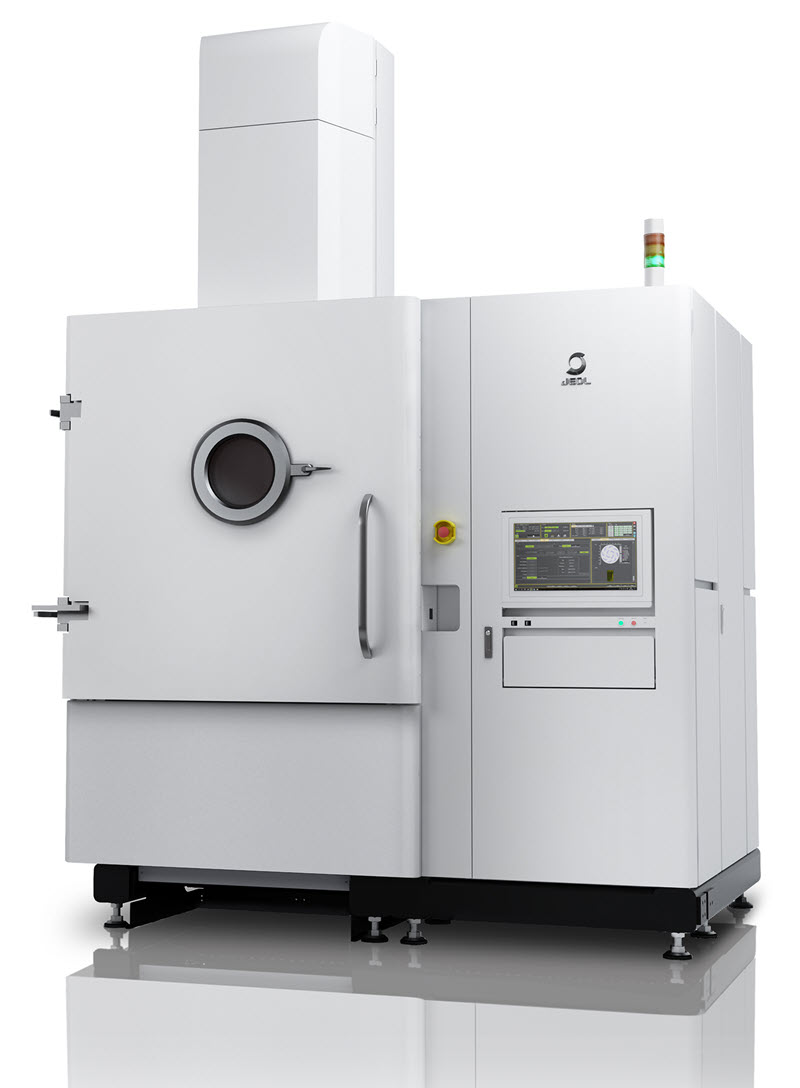JEOL’s First EBM 3D Printer in North America to Be Installed at Cumberland Additive’s Neighborhood 91 Location
Additive manufacturing (AM) supplier Cumberland Additive will be the first to install JEOL (TYO: 6951)’s new Electron Beam Melting (EBM) powder bed fusion machine in the United States. This new metal 3D printed E-Beam system by the Japanese firm will expand capabilities, primarily for serial part production.
Ever since Japan’s JEOL debuted its JAM-5200EBM electron beam metal 3D printer to a North American audience at the RAPID + TCT event in May 2022, it has garnered interest in its display of serially built nested parts and a lightweight yet strong titanium electron beam column. At the time, the company had entered the equipment production phase for its flagship JEOL printer, and now it’s ready for installation.
 JEOL EBM 3D printer. Image courtesy of JEOL.
JEOL EBM 3D printer. Image courtesy of JEOL.Aside from the installation of its first machine in the country, JEOL and Cumberland will collaborate to demonstrate the abilities of the EBM system in a fully immersive AM environment. Cumberland’s AS9100D and ITAR (International Traffic in Arms Regulations) certifications, with established processes and procedures that meet rigorous serial production requirements, are the ideal scenario to manufacture serial production of parts for applications in aerospace, defense, space, and energy markets.
Robert Pohorenec, president of JEOL subsidiary JEOL USA, says the last year has been significant to the brand’s AM group, particularly because it is pursuing metal AM-specific aerospace qualifications that will validate the robustness and reliability of JEOL-designed hardware.
“We are delighted to align with Cumberland Additive’s existing customer base and expansion strategy with aerospace, medical, and energy industries and to showcase the production quality and reliability of our 3D printer that will be centrally located at Neighborhood 91, the first fully integrated production campus dedicated to additive manufacturing,” explained Pohorenec.
In addition to being a centralized resource for the AM industry, Neighborhood 91 also attracts collaborative academic research opportunities and workforce development at world-class universities like Carnegie Mellon and the University of Pittsburgh. By connecting all the components of the printing supply chain into one production ecosystem, the campus is key to Pittsburgh’s advanced manufacturing scene. Furthermore, its location on airport property, adjacent to four runways, offers the potential for rapid part deployment to customers around the world.
Back in 2021, Cumberland expanded its operations to the Neighborhood 91 AM production campus, joining other businesses like Metal Powder Works, HAMR Industries, Wabtec, and The Future of Jewelry.
John Jenkins, President of Cumberland Additive, emphasized this new partnership: ”Cumberland is excited to partner with JEOL to bring in this new state-of-the-art electron beam technology that promises cost-effective and efficient manufacturing, with a diversity of material offerings for our customers. We are honored to be the first North American partner location for this exciting new technology.”
JEOL’s EBM 3D printing technology began in 2014, derived from the company’s decades-long expertise in the development and production of advanced electron optics technology used for research and industrial applications, including electron microscopes and e-beam lithography tools with unique vacuum technology. Designed for serial production with maximum uptime, JEOL’s 3D printing technology is clean, with a helium-free production environment that prevents smoke events and powder scattering.
EBM technology works by melting metal powder layer-by-layer with a high-energy electron beam, which is controlled by a magnetic field, making it well-suited for producing high-quality, dense metal parts with complex geometries and internal structures.
Although the EBM market is small, it is slowly gaining traction mainly because of its distinct process, material capabilities, and ability to produce lightweight, high-strength parts with unique properties. During the last few years, the EBM market has become particularly popular in industries like aerospace, automotive, medical, and energy, where it is used to manufacture components made from materials like titanium, nickel-based alloys, and stainless steel.
For example, original equipment manufacturers (OEMs) in the aerospace industry use EBM to produce lightweight and high-strength components like turbine blades. Other OEMs in the medical field manufacture customized implants, such as hip and knee replacements, as well as dental and cranial implants. Thanks to EBM’s ability to create porous structures and complex geometries, the final products are ideal for improving osseointegration and patient-specific customization. Alternatively, sectors such as defense employ it to manufacture parts for missiles, while energy OEMs are using EBM to make heat exchangers and fuel cell components.
Along with JEOL, other leading companies that manufacture and supply EBM machines include pioneering Swedish firms Freemelt and GE Additive subsidiary Arcam, as well as UK maker Wayland Additive, and Chinese business Sailong Metal.
JEOL and Cumberland Additive will be returning to Rapid + TCT starting May 2, 2023, in Chicago to reveal more details about their partnership.
Subscribe to Our Email Newsletter
Stay up-to-date on all the latest news from the 3D printing industry and receive information and offers from third party vendors.
You May Also Like
Precision at the Microscale: UK Researchers Advance Medical Devices with BMF’s 3D Printing Tech
University of Nottingham researchers are using Boston Micro Fabrication‘s (BMF) 3D printing technology to develop medical devices that improve compatibility with human tissue. Funded by a UK grant, this project...
3D Printing Webinar and Event Roundup: April 21, 2024
It’s another busy week of webinars and events, starting with Hannover Messe in Germany and continuing with Metalcasting Congress, Chinaplas, TechBlick’s Innovation Festival, and more. Stratasys continues its advanced training...
3D Printing Webinar and Event Roundup: March 17, 2024
It’s another busy week of webinars and events, including SALMED 2024 and AM Forum in Berlin. Stratasys continues its in-person training and is offering two webinars, ASTM is holding a...
3D Printed Micro Antenna is 15% Smaller and 6X Lighter
Horizon Microtechnologies has achieved success in creating a high-frequency D-Band horn antenna through micro 3D printing. However, this achievement did not rely solely on 3D printing; it involved a combination...





























